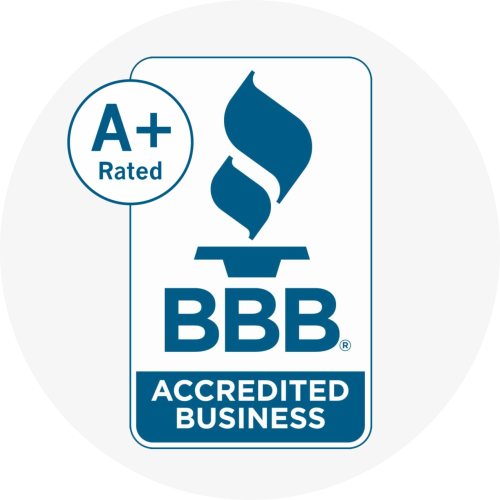If your business relies on telecommunications systems, it’s important to have a proper commercial structured cabling system.
Structured cabling forms the foundation for your office equipment and communications systems. When properly planned and installed, it can help your business operate a lot more efficiently.
In this guide, we’ll cover everything you need to know about commercial structured cabling, how it works, and why the right system can be so beneficial to your operations.
What Is Commercial Structured Cabling?
Commercial structured cabling refers to the system of cabling and hardware an organization uses to run networking tasks and operate efficiently.
Structured cabling follows a specific method of installing and maintaining cabling systems for communications in a commercial or industrial building. This includes the cables, connectors, and hardware used for items like phone systems, IT networks, and data systems.
Commercial structured cabling is designed to support multiple types of communications within an organization. These cabling systems should also be flexible and scalable for future changes and upgrades.
Commercial structured cabling systems are often used in large buildings or office complexes to make sure that every device and system in that office is connected and communicating properly. This is essential for efficient telecommunication systems.
Commercial Structured Cabling Components
Any commercial structured cabling system can be broken down into three main components:
Cable Pathways
These are the areas where the cables run
Connecting Hardware
The different types of panels and connections that connect the cabling system together
Cables
The actual cables in the system that can be made from various materials.

Within these three areas, there are various commercial structured cabling parts. Let’s cover some of the main ones.
Copper Cables
These include Category (CAT) 5, CAT 6, and CAT 6A cables, which are used for Ethernet data transmission.
Fiber-optic Cables
Used for high-speed data transmission over long distances and often used to connect different parts of a building or campus.
Connectors And Patch Panels
These are used to connect the cables to devices and to provide a central point for managing and organizing the cables.
Racks And Cabinets
Used for housing and organizing the equipment and cables.
Cable Management
This includes components such as cable ties, clips, and trays that are used to organize and secure the cables in place.
Testing Equipment
Tools like cable testers and certifiers are for testing the cables and ensuring that they are working properly and safely.
Power Distribution Unit (PDU)
The devices are for distributing electrical power to the cabling system.
Five Benefits Of Structured Cabling
Implementing a well-planned and maintained commercial structured cabling system can have many benefits for any type of organization.
1. Saves Time
With a structured cabling system in place, cables are organized and labeled, making it easier to identify and trace cables. This can save time and money when troubleshooting or upgrading.
A well-organized cabling system also ensures that the organization’s cables have uniform documentation, which makes it a lot easier to fix, upgrade, or expand on the cables.

2. Easier To Scale
Structured cabling systems are designed to be flexible and scalable. This makes it easy to add or remove devices and connections as needed. Your business can start with a small cabling system, and easily grow this as technology and hardware demands increase.
3. Better Reliability
A well-designed and properly installed structured cabling system is less likely to experience problems or failures. With a structured cabling system, it’s also easier to identify and resolve problems when they do occur. So if an issue does arise, you can fix it much faster. This means less downtime.
4. Better Performance
Commercial structured cabling systems are designed to support high-speed data transmissions. This equates to faster and more reliable communication for your business.
Your cabling system will also be carefully planned based on your organization’s specific hardware requirements. This will support your system better, offering enhanced performance.
5. Cost Savings
A structured cabling system can save your organization money in the long run by reducing the need for frequent repairs and upgrades. These systems also make it easier to add or remove devices and connections.
PDUs in cabling systems can also control and monitor power usage. This is a useful way to reduce energy costs and improve overall energy efficiency.
Establishing A Commercial Structured Cabling System
There are a few key steps involved in establishing a commercial structured cabling system. It’s critical to follow these steps carefully to ensure that the system works for the specific organization, its environment, and its hardware.

Planning And Design
Start by assessing the needs of the building and creating a detailed plan for where the devices and cables will go. This should include creating a layout of the cabling system and determining the type of cabling, equipment, and connections required.
Installation
This is in terms of the installation of the cables, connectors, and other components according to the plan. The installation process should comply with industry standards, such as TIA/EIA, and standards set out by BICSI.
Testing And Certification
After the installation is complete, the cables and connections should be tested and certified. This is done to make sure they work correctly and meet the relevant industry standards.
Documentation
It’s important to create detailed documentation of the structured cabling system. This includes labeling the cables and creating a list of the equipment and all the parts used in the system.
Maintenance
Once the cabling system is installed, performing ongoing maintenance is paramount. This ensures that the system works properly through regular inspections, testing, and cleaning.
Summary
Setting your organization up with an efficient structured cabling system is essential for optimal telecommunication performance. Your cabling system dictates how your hardware performs, how it is connected, and how easy it is to manage and scale these systems.
It’s important that your organization follows a clearly structured cabling plan, and that it invests in high-quality cabling infrastructure. This will make a major difference in how your telecommunications systems perform overall.









